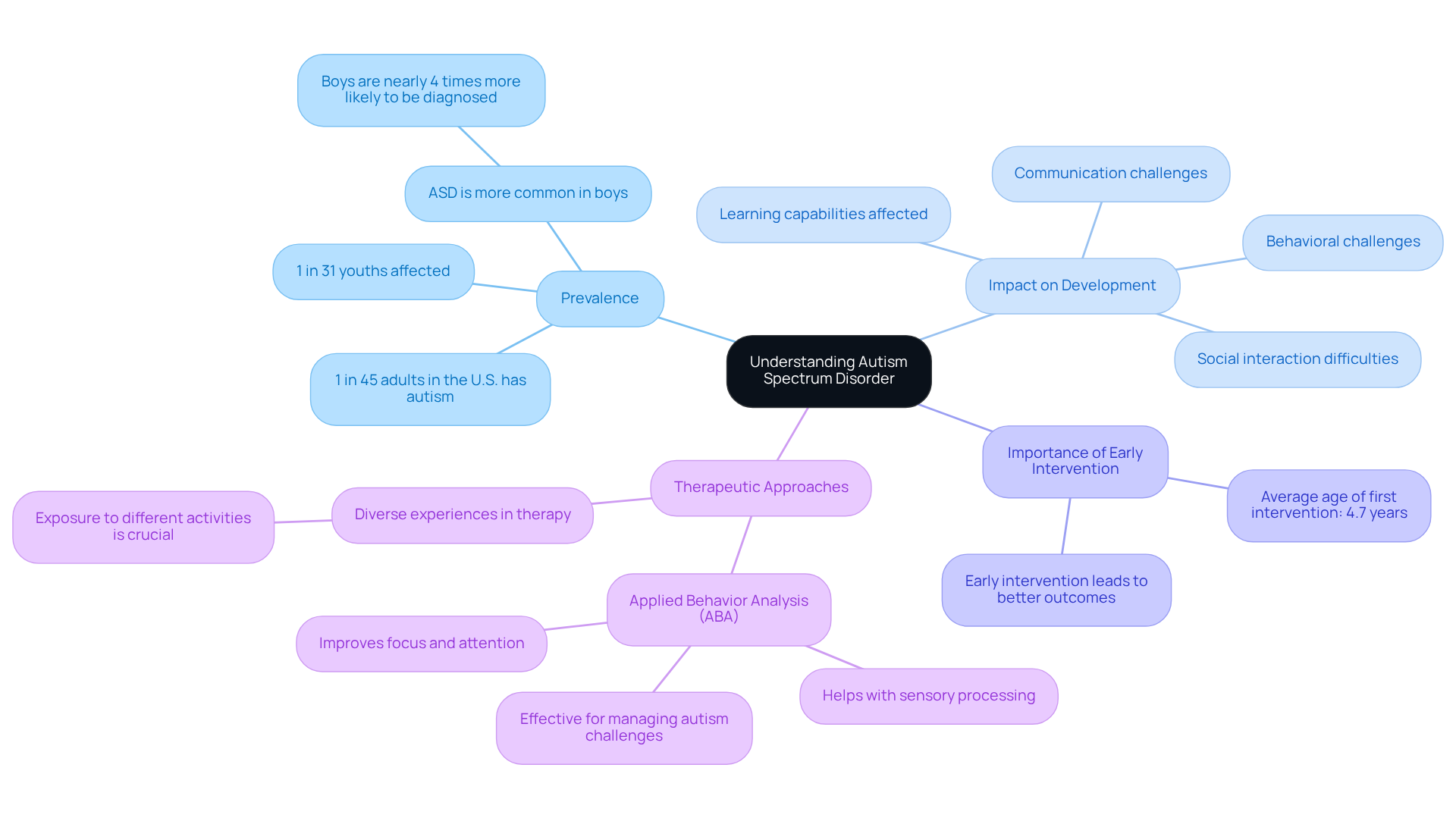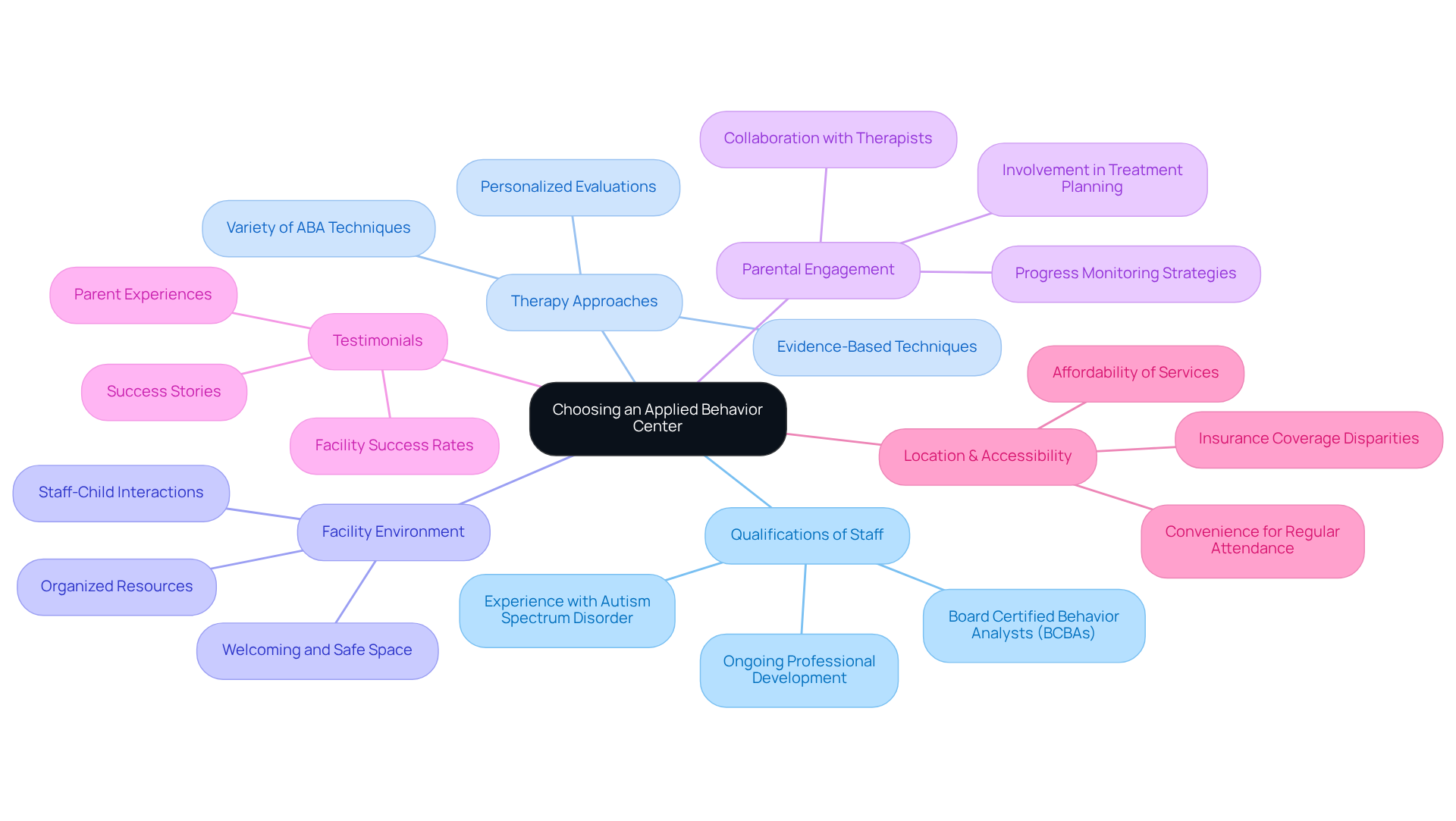October 17, 2025

Choosing the right applied behavior center for autism is essential for effective therapeutic interventions. Understanding Autism Spectrum Disorder (ASD) is crucial, as it allows for a comprehensive evaluation of various factors. These factors include:
Informed decision-making, based on these criteria, is vital for aligning the center's services with a child's unique needs. This alignment not only enhances the effectiveness of the therapeutic interventions but also ensures a supportive environment for the child’s development.
Choosing the right applied behavior center for autism is a pivotal decision that can significantly influence a child's developmental journey. With approximately 1 in 31 youths diagnosed with Autism Spectrum Disorder (ASD), understanding the nuances of this multifaceted condition is essential for parents seeking effective support. This guide delves into the critical factors that can help families navigate the selection process, ensuring they find a center that aligns with their child's unique needs. But how can parents discern which facility will truly foster their child's growth amidst the myriad of options available?
Choosing the right applied behavior center for autism requires a thorough understanding of Autism Spectrum Disorder (ASD) and its developmental implications. ASD is a multifaceted neurodevelopmental condition that significantly impacts communication, behavior, and social interaction. According to the CDC, approximately 1 in 31 youths are identified with ASD, underscoring the prevalence of this condition. Children with autism may exhibit a spectrum of symptoms, ranging from mild to severe, which can profoundly affect their learning capabilities and social skills. Identifying these traits is crucial for parents to determine their offspring's specific requirements, a vital aspect when evaluating potential therapy facilities.
Research highlights the importance of early intervention, with the average age of first intervention in the U.S. being around 4.7 years. Prompt assistance can lead to significantly improved outcomes for individuals with autism. Therefore, selecting an applied behavior center for autism that aligns with a young person's unique developmental profile is essential. Familiarity with various therapeutic approaches, particularly Applied Behavior Analysis (ABA), is critical, as ABA is widely recognized for its effectiveness in addressing the challenges associated with autism. As Temple Grandin states, "Kids have to be exposed to different things in order to develop," emphasizing the necessity for diverse experiences in therapy. This essential knowledge empowers parents and guardians to make as they navigate the process of selecting a suitable applied behavior center for autism for their children.

When evaluating an , several key factors should be considered to ensure the best fit for your child's needs.

Navigating the enrollment process for ABA therapy can initially appear daunting; however, adhering to the following steps can significantly simplify the experience:

Selecting the appropriate applied behavior center for autism is a pivotal decision that can profoundly impact a child's developmental journey. This process demands careful consideration of several factors, including:
By prioritizing these elements, parents can identify a center that not only caters to their child's unique needs but also cultivates a supportive and effective therapeutic experience.
Key insights discussed throughout this article underscore the significance of:
Understanding the qualifications of staff, the effectiveness of therapy methods, and the facility's environment are all essential components in making an informed decision. Furthermore, navigating the enrollment process with clarity and purpose ensures that families can seamlessly integrate their child into a program that fosters growth and development.
Ultimately, the journey to selecting an applied behavior center for autism is significant, filled with opportunities for positive change. It is crucial for parents and guardians to remain proactive, informed, and engaged throughout this process. By doing so, they not only advocate for their child's needs but also contribute to a more comprehensive understanding of autism and its impact on development. Taking the time to choose wisely can lead to transformative outcomes, creating a lasting difference in the lives of children with autism and their families.
What is Autism Spectrum Disorder (ASD)?
Autism Spectrum Disorder (ASD) is a multifaceted neurodevelopmental condition that significantly impacts communication, behavior, and social interaction.
How common is ASD among youths?
According to the CDC, approximately 1 in 31 youths are identified with ASD, indicating its prevalence.
What symptoms do children with autism exhibit?
Children with autism may exhibit a spectrum of symptoms ranging from mild to severe, which can profoundly affect their learning capabilities and social skills.
Why is early intervention important for children with autism?
Research highlights that early intervention can lead to significantly improved outcomes for individuals with autism, with the average age of first intervention in the U.S. being around 4.7 years.
What should parents consider when choosing an applied behavior center for autism?
Parents should consider how well the center aligns with their child's unique developmental profile and familiarize themselves with various therapeutic approaches, particularly Applied Behavior Analysis (ABA).
What is Applied Behavior Analysis (ABA)?
ABA is a widely recognized therapeutic approach that is effective in addressing the challenges associated with autism.
What did Temple Grandin emphasize regarding therapy for children with autism?
Temple Grandin stated that 'Kids have to be exposed to different things in order to develop,' highlighting the necessity for diverse experiences in therapy.
How can knowledge about autism help parents?
Understanding autism and its implications empowers parents and guardians to make informed choices when selecting a suitable applied behavior center for their children.
Our expert recruitment strategies and AI-driven sourcing ensure that you receive top-notch candidates quickly, without compromising on quality. Whether you’re looking for BCBAs, Clinical Directors, or RBTs, we’ve got you covered.